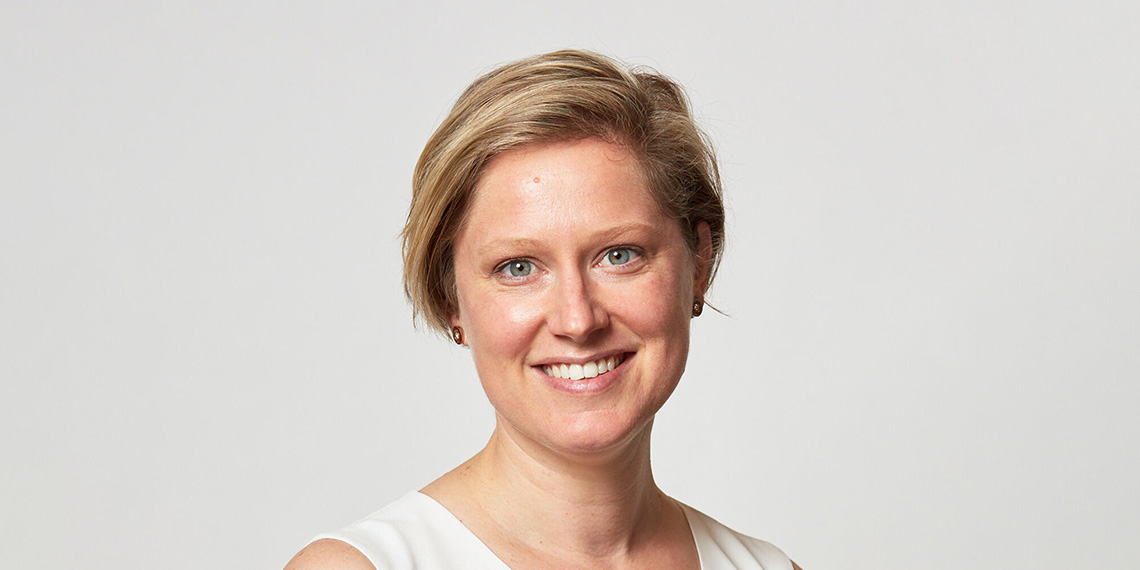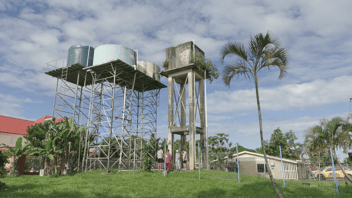Riding the wave of transformation

Changemaker and water industry disruptor Lindsey Brown is no stranger to transformation. Recently appointed to the position of Australian Market Leader — Water at GHD, Brown shares her insights on why embracing change is crucial and her vision for the future of the Australian water sector.
As most water professionals know, the role and expectations of the water sector are transforming dramatically. The list of objectives, as well as the range of skills and services expected of a modern water utility, has grown exponentially. Where the past water utilities were custodians of public health, today’s water utilities are much more complex. They are expected to deliver on a range of social and community benefits far beyond providing clean water and treating wastewater.
Modern utilities now also protect the environment, provide social community benefits, and maybe even water for urban cooling. There’s a focus on reducing our carbon emissions, and driving regional prosperity and productivity. The list could go on but in short, there's an ever-growing remit of what the modern utility is now meant to do.
Maybe these changes are the inevitable evolution and progression of the modern water utility, but how did they happen?
I believe one reason is that governments have realised water utilities’ great potential to benefit communities — in many cases they have built trust over decades of operation. They are situated and operated locally and have a close connection with community, particularly when nested within local government authorities.
Another reason is the greater understanding and appreciation we now have of the interrelated nature of many aspects of the social, economic and environmental context in which we operate. We didn't once see the connection between flood risk reduction and urban stream health.
We didn't see the connection between morbidity, community wellbeing and the extent of our urban tree canopy. We didn’t appreciate and own our carbon emissions and their impact on our climate. We didn’t appreciate the contribution we were making, or could make, to social equality and economic opportunity simply by changing the way we spend money we were going to spend anyway. We now have a greater understanding of the interconnectedness of the systems in which we live, and thankfully we are adjusting accordingly.
Importantly, we are now more easily able to hear directly from customers and communities in terms of what they want and expect from their utilities. Thanks to social media activism and improved ability to organise and also engage with diverse parts of the population, the ability for community to make itself heard is the strongest it has ever been. Maybe even more importantly, so is our interest in listening.
Shifting sector
These evolving expectations have certainly had an impact on the transformations we are undergoing as a sector. There are too many shifts to list, but here are a few that have momentum right now.
One example is the rise of the "digital utility". I would argue that we are already a digital industry (I can't say I've seen a slide rule in a while, but maybe that’s just me).
The question we need to be asking ourselves is: digital to what end? Digitisation as a pathway to efficiency, as a way of ensuring we can meet all of our customers’ expectations while maintaining an affordable service, is a worthwhile pursuit but we are still largely coming to grips with implementing it at scale. How specifically digitisation drives value creation is an ongoing conversation.
Another transformative trend underway within the sector is the shift towards social and sustainable procurement mechanisms, including minimum local resourcing guidelines and supplier codes of conduct. Social and sustainable procurement requirements are becoming increasingly prevalent and heavily weighted major contracts across the country.
Water authorities spend a significant amount of public money and are now looking to achieve a lot more than just deliver an engineering outcome. As drivers of regional prosperity and broad social benefit, spending choices are seen as opportunities to support vulnerable segments of society and build the scaffolding of economic independence for those who have historically been systemically excluded.
From my recent work on this issue, social and sustainable procurement is the most effective when it is deeply connected to the outcomes that the organisation is trying to drive. We are much more successful in nurturing and implementing these types of initiatives when they have a clear and compelling link to our core business.
Sitting on top of all of this is the shift toward multiple benefits and the complexities of transboundary, cross-organisational collaboration needed to drive these outcomes.
Integrated governance models that leverage investment potential and skills capability from diverse sources — think state government, councils, water authorities, community members, traditional custodians — are emerging as a way to resolve the tension between “who benefits and who pays” for outcomes that are not neatly linked to any one organisational budget but have measurable positive impacts on communities.
This requires a coming together of thoughts and agendas that have perhaps felt historically unfamiliar, professionally uncomfortable, and downright frustrating.
So how do we pull our amazing people into this conversation and see the opportunities in these changes? How do we help our organisations to lean in at every level, not just the board room?
Going with the flow
We start by admitting that change is not just coming — it’s here. When trying to pull ourselves up on to any wave, the smartest thing we can do is take advantage of that energy and momentum, accept it and move with it. This can be hard for a sector with 150 years of legacy and built-in expectation around how we do things.
But the alternative is not only futile, it’s a waste of our talent. Water challenges have never been greater and we need everyone on board. The more we can encourage our people to see themselves as part of the future and embrace its potential, the more likely we are to retain what is already great about our industry.
Admitting that change is here is hard for some, and the fact that it’s a challenge speaks to the next important thing we need to do: get a lot more comfortable not being the expert. Technical professionals within our sector are often valued for being right. Our thresholds for failure are very narrow. We are so used to knowing the answer and feel a huge responsibility for the essential, life-giving product that we produce.
That's a good thing, but we can't let fear of being wrong or of not knowing the answer impede our willingness to learn, listen and embrace discomfort. We have a lot to unlearn about how things should be or what “good” looks like as we outgrow and outpace the historical cornerstones of our success.
And as the needs of our industry broaden, the skill sets needed in our industry will grow, too. We need to have many different types of people with different skills, different backgrounds and different ways of thinking. We need a sector that reflects our communities so we can do our job in serving them. It’s one of the reasons why I'm so passionate about diversity and inclusion in our industry. But bringing that diverse group of people together only yields results if we are open to making space for other ways of knowing; accepting a different range of potential “right” answers.
We cannot underestimate that challenge, but we need to meet it head on.
To do that, I call on all water sector leaders — and I mean leaders at every level — to focus on culture. Culture is the place where we give people permission to not know. It's where we give people permission to ask questions and learn from others. It's where we give people license to explore and be curious and experiment and innovate.
That’s easier said than done, but we need to move away from corporate platitudes and start seeing this in the engine room of the way our sector operates. How many organisations are brave enough to really hold their people to account for this kind of cultural shift?
This is what it takes to help our people feel safe enough to lean into transformational change.
Rewards of change
If we can ride the wave of transformation, we have a lot to look forward to in our industry.
Diversity: in skill sets, ways of thinking, types of people and much more that gives different perspectives and new forms of value. This gives us a whole new range of tools to tackle the challenges ahead of us and some new ways to do it.
Curiosity: in problem-solving and solution finding — sitting with the problem a little longer to see what else emerges. With permission to not know, we can start to ask the “stupid questions” that ultimately lead to incredible results.
Integration: between professions, systems, organisations, and outcomes that delivers on community expectations in ways we can’t imagine today. Delivering value becomes the prime directive, and all the boxes and lines we draw start to matter less and less.
Connection: to Country, culture and history, to each other, and to the incredible legacy offered by our sector. Ultimately, this is where we realise our shared mission and look back on our challenges with satisfaction and pride.
Sounds like a fun ride to me.

.jpeg?width=352&name=WhatsApp%20Image%202024-10-01%20at%203.52.48%20PM%20(3).jpeg)
